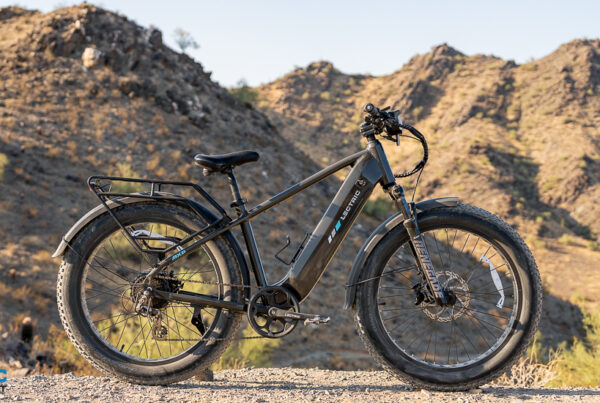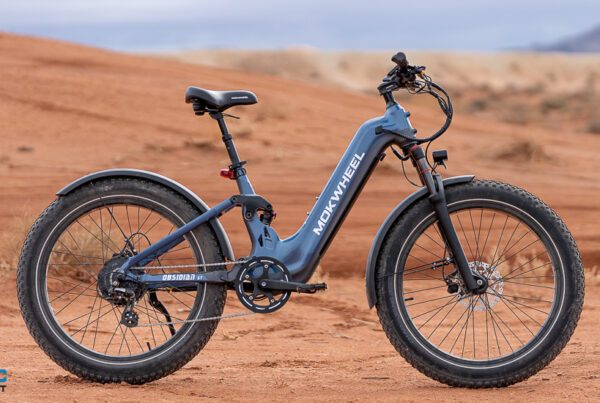Back in January of 2020, we wrote about all of the new prototype electric aircraft that were being tested (to see that article, click here) One of the aircraft featured was the Eviation company from Israel. The German global shipping company DHL has announced that they will buy a dozen Eviation E-Planes, and I will tell you why that is awesome news.
_________________________________________________
What’s the Tech?
Electric systems are pretty simple. The design of the motors and controllers are pretty well-stablished. The big near-term change with batteries is the option of solid-state-batteries (SSB’s), so…the only remaining question is “who is going to go first?” There have been a few instances where a company “dipped their toe” into the electric plane game, but…it looks like DHL and Eviation are the first ones to dive into the deep end. The batteries are high-amp units from Kokam in South Korea, and the motors are from MagniX, in Canada.
Whether you are talking about cargo or human passengers, the aviation industry has switched over to a hub-and-spoke system, just a few decades ago. Instead of trying to schedule planes to fly from every possible city to every other possible city, small planes bring passengers and cargo on a short hop to a major city. There, everything is moved to a large aircraft traveling to another major city “hub”.
Everyone seems to hate connecting flights, and needing to get on three different airplanes to get to your destination, but…this is the system we have. The short hops at the beginning and end of your flights (the “spokes”), are the part where electric aircraft will be able to gain a market share over the next few decades. Not only are electric drivetrains more reliable, modern “self driving” systems can reduce the cockpit workload from two pilots to only one.
_________________________________________________
The Eviation Alice
The two pics below highlight the Eviation flying prototype from a year and a half ago, and below that, the changes they made to improve the design based on potential customer feedback desires.

What they liked:
The body of both versions has a composite construction, which is more labor-intensive to build than the conventional aluminum-alloy aircraft body. The big payoff is that the body is lighter…MUCH lighter. And, it will last longer before it needs to be de-commissioned due to stress-cracks. And, once you re committed to a composite construction, you suddenly have a few options that were not cost-effective before, but….now that you are building with composites, it costs the same to consider some creative options….
Instead of the mass-produced cylindrical body, the Eviation Alice has a wide and short cross-section. This has two benefits. First, this makes the body less affected by cross-winds in all conditions, but also…it uses the effect of a “lifting body”.
You may have heard that an airplane wing is flat on the bottom, and is rounded on the top. This emphasizes “Bernoulli’s principle“, and that is one of the ways in which a wing creates lift, and…by having the airplanes body shaped this way, the body adds to the aircrafts lift. To be fair, it may not be a huge effect, but…when it comes to aircraft, every little bit helps. The more lift the body generates, the smaller the wings can be, and that reduces drag.
Also, they both use well-researched five-bladed propellers, instead of the more common (and less expensive) 3-blade and 4-blade designs. A specific amount of thrust is needed, so…by going to a higher number of blades, the propellers can spin at a slightly lower speed, and also have a smaller diameter. This allows the propellers to spin slow enough that their tips are not breaking the sound barrier, which results in a MUCH quieter aircraft during takeoff. A normal airplane of this size may not be very loud, but…one of the things that electric drivetrains excel at is running quietly, and these 5-blade propellers will help emphasize how incredibly quiet these E-Planes can be at the smaller regional airports, with residential homes nearby…
It is the the torque of electric motors that allows them to provide enough power to drive wide propeller blades at lower RPM’s.
What they didn’t like:
Having three motors is great for redundancy, and since the craft needs “X” amount of thrust to take off with a full load of cargo, the three motors can be individually smaller than the equivalent thrust of using two larger motors. However, two larger motors can be lighter and less expensive than three smaller ones.
The aviation industry is very litigation-averse and risk-averse. So I must point out that this first milestone purchase-order for actual electric airplanes that are intended to do real work are for cargo…not passengers. That being said, even when we are talking about kerosene-burning jet-engine passenger craft, the entire industry has converted over to using two engines as the model with reasonable-enough safety, coupled with the most affordable purchasing and maintenance.
The Ford Tri-motor of 1925, along with the Douglas DC-10 and the Lockheed L-1011 are famous examples of a 3-engined long-range passenger aircraft (more powerful than two, cheaper than four). The largest passenger aircraft still use four engines, like the Boeing 747, and the Airbus A380. However, the majority of passengers miles are flown with smaller twin-engine aircraft, like the Boeing 737 and the Airbus A320. This is important to understand, because the shorter ranges are where the electric airplanes excel, and aircraft safety regulators like the FAA feel that using two-engines is the safe and affordable configuration for commercial traffic.
Push or Pull?
The original prototype had pusher propellers. One of the issues with the rear-most propeller would be the danger of a “ground strike”. Of course, a pilot will always be trying to take off and land in a fairly level orientation, but…bad weather and high gusts of wind can cause a sudden steep angle, and the rear propeller can hit the ground. Even if it’s just a tiny strike, that propeller is toast, and possibly even the motor shaft would be damaged. Even if money was no object (and money will ALWAYS be an object of concern), it takes TIME for an aircraft-certified mechanic to install a new propeller, once you can even find one. Switching to the conventional tractor-configuration “pull” propellers avoids that issue completely.
Lastly, they changed the tail.
The previous V-tail can theoretically have less drag than a conventional tail, with it’s vertical rudder and horizontal stabilizer. The V-tail might even cost slightly less. However, the newest version with a “T-Tail” is very well-understood, and is very stall-resistant in adverse conditions. The V-tail Beechcraft Bonanza has a very checkered history, and regardless of why…the New Alice has taken the safe route with it’s tail design.
I am not a pilot, but I really like the two engines near the centerline in the latest version. I’ve read many times that a major benefit of this configuration is in a situation when one engine dies, and its still fairly easy to control the aircraft.
If the two engines are mounted on the wings (and farther away from the centerline of the body), having one engine fail will cause an “asymmetric thrust”, where the plane is trying to pivot around instead of flying straight. Of course the pilot immediately provides hard rudder to help the plane fly straight, but…that causes a lot of drag, possibly losing range and altitude.
Twin-engined planes typically have their engines sized so that they need both engines to take off if they have a full load of cargo, but…they can fly and land safely with only one engine running. This is one area where electric motors have proven to be more reliable than internal combustion engines (with a melted piston, melted exhaust valve, or a fuel leak)
_________________________________________________
The Battery
Everyone in Aviation is anxiously waiting on Solid State Batteries (SSB’s). This last year, there has been a boom in electric plane prototypes to ensure their companies will have a product that can hit the ground running as soon as the upgraded SSB’s are ready for the real world. Toyota had announced that they were going to debut their first commercial SSB during the Olympics in Tokyo, 2021. However, that has been delayed. It may have been due to Covid issues restricting supply lines, but that reasons remain to be seen.
Not only is a Solid State Battery more fire-resistant, but the big leap in technology is their ability to double the range of a vehicle, per volume of battery. The two vehicles that will be most impacted by this are motorcycles, and aircraft.
“…Even with today’s battery technology, we can do short flights, 100 miles in a retrofitted aircraft and 650 miles in an aircraft designed from the start for electric propulsion. To put that in perspective, only 5% of worldwide airline flights in 2018 were less than 100 miles (competing against local-haul trucks), but…45% were less than 500 miles. These numbers do not even include cargo flights. So there is clearly a need for these ranges. Why not have them be electric? Why not have them be clean and quiet, plus reducing the 4% of emissions worldwide generated by aviation…“

I am interested in the voltage of the MagniX system used on the Eviation Alice, but I haven’t found it yet. All I could find out so far is that Eviation is now using high-amp cells from Kokam in South Korea (click here). Kokam is a very highly regarded manufacturer, who made the battery packs for the “Solar Impulse 2” research aircraft (click here).
The battery is spread out across the aircraft in the wings and fuselage in a way that optimizes the aircrafts balance, to make it as stable as possible. One feature of battery-powered aircraft is that the “fuel” doesn’t change weight or shift the balance of the aircraft as it is used up.
_________________________________________________
MagniX Motors
MagniX Tech is owned by the Clermont Investor Group, based in Singapore. As of January 2021, they have moved their research facility to Everett, Washington, in the North-West USA, which is near The Paine Field airport and the a major Boeing facility.
The motors shown below are well-understood inrunners, fairly similar to the Motenergy 75-7 found on Zero electric motorcycles. This style can easily have liquid-cooling added, but Zero and MagniX both seem to be doing well with air-cooling, which saves weight.

From this pic, we can see that the first retail product from MagniX is a “stackable” motor configuration, to meet a variety of design needs. MagniX has been very clear that they want to take an early lead in conversion kits for existing planes that are already certified and well-proven.
Due to safety reasons, aircraft engines must be thoroughly inspected every so many hours of operation, and they must be re-built to aircraft standards on a very strict schedule, even if they show no signs of wear or damage. This is called a “Time Before Overhaul”, or TBO. Turboprop engines are more expensive to buy than a piston engine of the same power. However, turboprops have a much longer TBO, and that is where aircraft operators have saved money in the long run. MagniX anticipates their electric drive systems to have an even longer TBO than turboprops.

Your eyes do not deceive you, this graphic above shows the Magni500 “double motor” configuration, and it is using FOUR controllers. Each motor module has its motor-phases divided into two groups. In essence, it is two separate motors intermingled in one motor housing. Then, each motor has it’s own controller, to allow half of the module to continue producing power if one of the controllers or motors has any issue.
This means the Magni250 has two motors and two controllers integrated into one system. The Magni500 stacks two of these modules to provide a single drivetrain with four motors and four controllers. This provides a significant redundancy for the utmost in reliability.
The “kV” of the motors is designed to provide the exact RPM’s needed for aircraft, so no PSRU reduction gear is needed between the motor and propeller, further simplifying the drivetrain.



_________________________________________________
This is a great milestone, and shows that some of the people with big money are continuing to push forward. I’m chomping at the bit to write more about Solid State Batteries, but there is no new information available yet.
_________________________________________________
Written by Ron/spinningmagnets, August 2021
Source link








